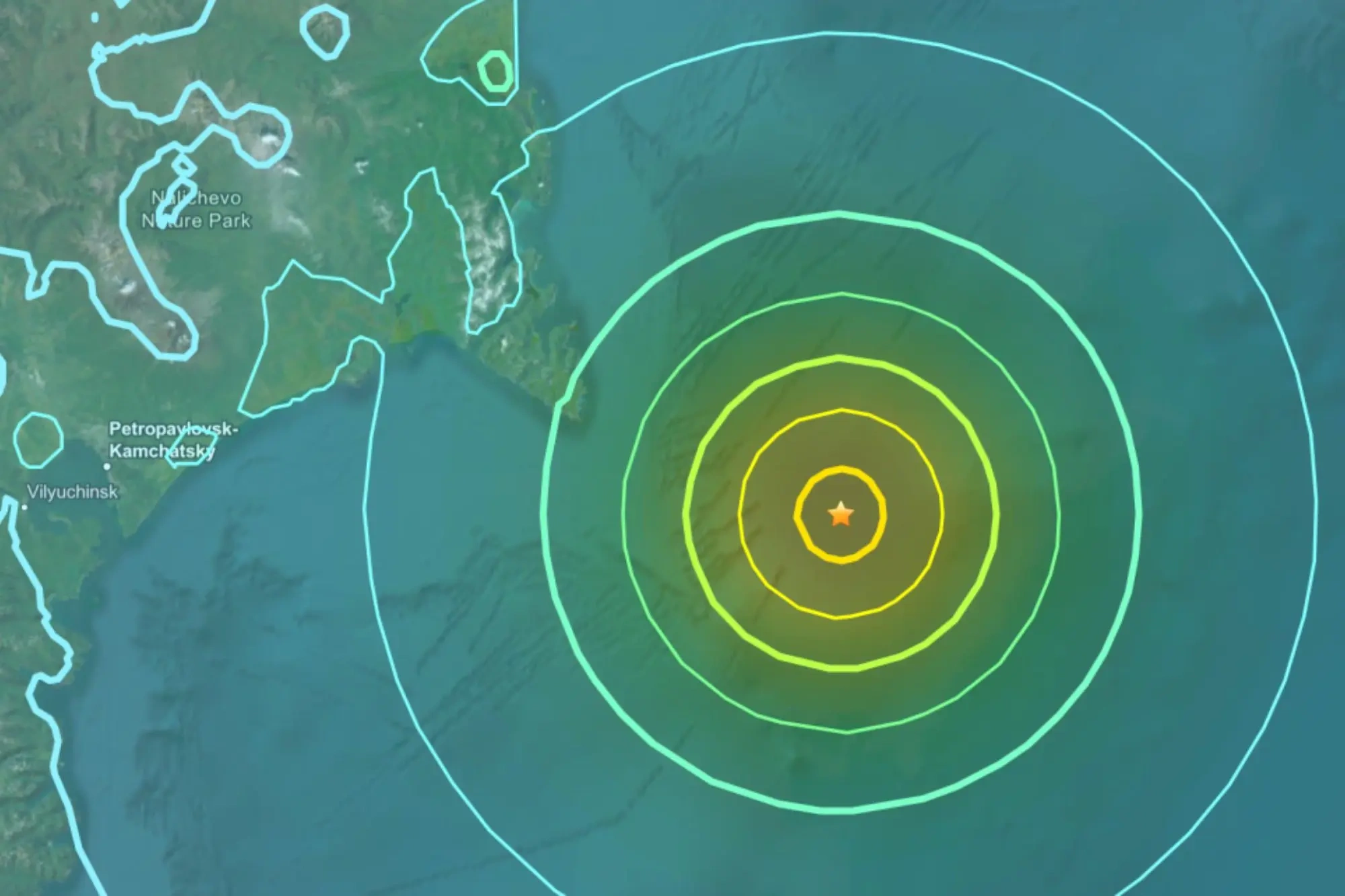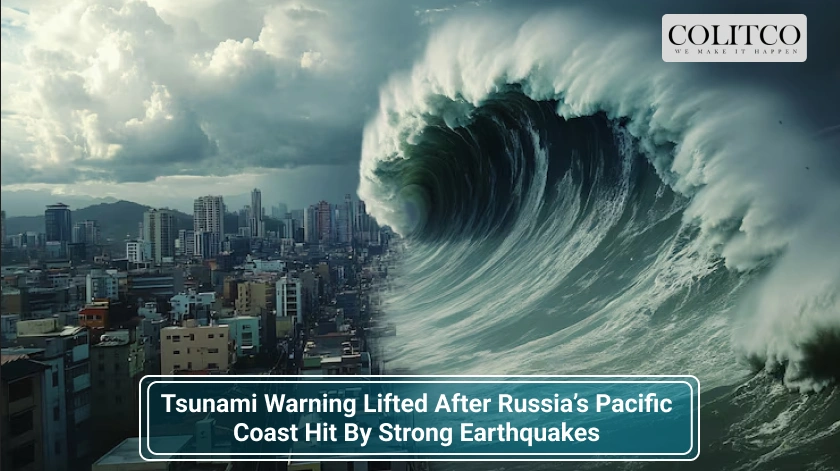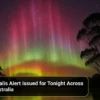The eastern coast of Russia was gripped by a wave of panic on July 20, 2025. A series of large undersea earthquakes rattled near the Kamchatka Peninsula.
The largest of these was an earthquake with a magnitude of 7.4, followed by two more above 6.0. Tsunami warnings were issued across the Pacific but were lifted hours later.
No reports of injuries or damage have yet come to light. Still, the event brought to renewed focus the age-old concern of seismic hazards in the region.

A series of strong undersea quakes struck near Russia’s Kamchatka Peninsula on July 20, sparking panic.
What Caused The Earthquakes Off Kamchatka?
Located east of Petropavlovsk-Kamchatsky, the main shock took place at a depth of 20 kilometres. This quake was recorded at 7.4 magnitude by the United States Geological Survey.
It was followed in short order by two other major tremors of magnitude 6.6 and 6.5. The entire series took place in under one hour, according to the GFZ geoscience centre in Germany.
Kamchatka is right in the middle of the seismically active Pacific Ring of Fire. It is where the Pacific Plate is thrust beneath the North American Plate. This just so happens to be one of the most earthquake-prone areas in the world.
🚨🇷🇺#BREAKING | NEWS ⚠️
Multiple large earthquakes have struck Northern pacific of Russia ⚡️7.3 Magnitude has struck followed by four or five large earthquakes ⚡️6.3, 5.4, 5.0 Magnitude quakes in the last hour they have triggered tsunami warnings in the western Pacific region… pic.twitter.com/ZyfM8WY6yq— Todd Paron🇺🇸🇬🇷🎧👽 (@tparon) July 20, 2025
Were Residents Evacuated In Time?
The Russian Emergencies Ministry put immediately the tsunami alert. The Pacific Tsunami Warning Centre also confirmed possible threats throughout the North Pacific.
Authorities urged a quick evacuation to higher ground for those living in affected coastal zones. The emergency broadcast went off in many cities, including Petropavlovsk-Kamchatsky.
Panic started; however, the evacuation went quite orderly. Shelters were opened inland. Helicopters and drones patrolled the coastline for waves.
No major sea-level changes took place, thank heavens. Within three hours, the tsunami warning was completely lifted.

The Pacific Tsunami Warning Centre issued an alert after a 7.4 quake struck Russia’s Kamchatka Peninsula, USGS confirmed.
Tsunami Threat Declared Over Without Damage
Despite initial fears, no tsunami waves came ashore. The Russian Ministry of Emergencies, having extinguished no casualties or damage to property, later on,
Hospital facilities remained on alert, though none of the emergency cases required operational responses. The PTWC then withdrew warnings for Russia, Japan, Hawaii, Guam, American Samoa, Indonesia, and Alaska.
The coastal monitoring stations reported only minor wave activity. The Hawaii-based National Tsunami Warning Centre then ended the regional watch as it was satisfied there was no threat.
Public transport restarted, and coastal residents were allowed to return home.
A tsunami warning has been issued after three earthquakes, one with a magnitude of 7.4, were recorded off the Pacific coast of Russia, according to USGS https://t.co/N46zEVIetV pic.twitter.com/rDQIxlSwUG
— Al Jazeera English (@AJEnglish) July 20, 2025
How Common Are Russian Earthquakes And Tsunami Threats?
Earthquakes in Russia are common, especially along the Kamchatka coast, and can at times be deadly. The peninsula has indeed seen a long history of seismic activity, with several earthquakes measuring more than magnitude 7.0.
In 1952, a 9.0 earthquake produced tsunami waves that traversed across the Pacific Ocean to Hawaii. Although no lives were lost in Hawaii, damage was wrought upon the infrastructure.
Tsunami Warnings Covered Much Of The Pacific
After all earthquakes larger than magnitude 7.0, tsunami warnings are a usual safety protocol. Tsunami alerts were also issued briefly in 2006 and 2013 along the same region.
The local population is trained to respond rapidly. Emergency drills are conducted in schools and at places of work.
Soon after the earthquake, the tsunami alerts extended toward various distant Pacific coastlines. Local warnings were released in Canada, Japan, Indonesia, and Alaska.
Several beaches were closed on a temporary basis as a precautionary measure. Fishing activities were banned in Japan and Hokkaido, with fishermen called back to the harbours.
In Guam and American Samoa, emergency managers activated response protocols. Coastal flights were held in suspension by the airports, but operations resumed within a few hours.
Indonesian BMKG also declared that there was no possible tsunami threat, but it continued to monitor the offshore measurements. Warnings were issued in all affected areas by late afternoon on 20 July.
Will Aftershocks Follow The Main Earthquake?
Yes, it is quite common for aftershocks to follow in such quake-prone areas. One expert had warned that over the next week, a series of smaller quakes may occur. These may cause mass disruption or mild tremors inland.
The Russian Geophysical Service and GFZ are keeping a watch on the seismicity on an hourly basis. No aftershock of magnitude greater than 5.0 has occurred since the main earthquake so far.
Local bodies advised the people to stay alert and not panic. Emergency numbers and evacuation routes were re-sent through SMS and radio announcements.
The Region Remains Vulnerable To Future Threats
Though no tsunami took place this time round, the possibility could never be discounted. Kamchatka is at the verge of one of the most unstable fault lines anywhere in the world.
Tsunami threats have always been and will continue to be a concern for the coastal population in Kamchatka. Early warning systems and cross-border cooperation are improving; still, the unpredictability of the ocean remains.
Meteorological agencies, from Japan to Alaska, keep an eye on the movements along the Pacific Plate. The Russian response to disasters this time was rapid, coordinated, and largely effective.
However, every new quake brings back to attention the region’s ever-present vulnerability.
Also Read: Tasmania Votes Early as Wild Weather, Sausages and Policy Promises Shape State Election Day
Conclusion
A terrifying Russian-Pacific earthquake tsunami warning was sent echoing through the global seismic community. Rapid alerting, swift evacuation, and zero casualties made it a fortunate escape. Science, communication, and preparedness thwarted a potential disaster. Yet, farther down the canyon of Kamchatka, the ground is still unstable.












